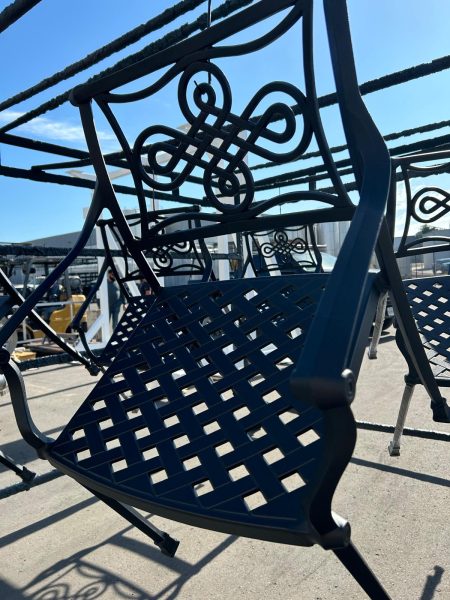
Powder coating has become one of the most popular finishing methods for metal products, offering superior durability and aesthetic appeal compared to traditional liquid paints. However, many property owners and manufacturers wonder whether powder coated items require additional protection from sun exposure. Understanding the relationship between powder coating and UV radiation is crucial for maintaining the longevity and appearance of coated surfaces, whether they’re patio furniture, architectural elements, or industrial equipment.
UV Rays and Their Effects on Coated Surfaces
Ultraviolet radiation from the sun poses significant challenges to all types of surface coatings. UV rays carry enough energy to break down chemical bonds in coating materials, leading to a process called photodegradation. This degradation manifests in several ways: color fading, chalking (where the surface becomes powdery), gloss reduction, and eventual coating failure.
The intensity of UV exposure varies based on geographic location, altitude, and seasonal factors. Areas with high sun exposure, like San Diego, experience more intense UV radiation throughout the year. Additionally, surfaces that face south or west typically receive the most direct sunlight and are therefore at higher risk for UV-related damage.
Do Powder Coated Items Need Sun Protection?
The answer depends on several factors, but high-quality powder coatings generally provide excellent built-in UV protection. Here’s what you need to know:
- Premium powder coatings contain UV stabilizers – Most modern powder coatings include UV-resistant additives that help prevent photodegradation and maintain color stability for years
- Darker colors typically last longer – Deep blues, blacks, and browns often show less fading than lighter colors because they absorb rather than reflect UV energy
- Polyester and polyurethane powder coatings offer superior UV resistance – These formulations are specifically designed for outdoor applications and provide excellent weatherability
- Quality matters significantly – Professional-grade powder coatings from reputable manufacturers include better UV protection than budget alternatives
Factors That Affect UV Resistance in Powder Coated Items
Several variables influence how well powder coated items withstand sun exposure:
- Coating thickness – Thicker applications generally provide better UV protection and longer-lasting performance
- Color selection – Light colors like whites and yellows are more susceptible to UV degradation than darker alternatives
- Substrate preparation – Proper surface preparation ensures better adhesion and longer-lasting protection
- Environmental conditions – Coastal areas with salt air, industrial environments with pollutants, and regions with extreme temperature fluctuations can accelerate coating degradation
- Application quality – Professional application ensures optimal film thickness and complete coverage, maximizing UV resistance
Best Practices for Protecting Powder Coated Items
While quality powder coatings provide substantial UV protection, certain best practices can extend their lifespan even further. Regular maintenance plays a crucial role in preserving appearance and performance. Clean powder coated surfaces every few months using mild soap and water to remove dirt, salt, and pollutants that can accelerate degradation.
When possible, position powder coated items to minimize direct sun exposure during peak UV hours. This is particularly important for decorative items where maintaining original color is critical. For architectural applications, consider the orientation of coated elements during the design phase to reduce unnecessary UV exposure.
Avoid using harsh chemicals or abrasive cleaners on powder coated surfaces, as these can damage the protective coating and make the surface more vulnerable to UV damage. Instead, stick to gentle cleaning methods that preserve the coating’s integrity.
When Additional Protection is Recommended
Certain situations warrant additional protective measures beyond standard powder coating. Items in extreme environments, such as those near the ocean or in desert climates, may benefit from specialized UV-resistant topcoats or more frequent maintenance schedules.
For critical applications where appearance retention is paramount, consider specifying powder coatings with enhanced UV packages or super-durable formulations. These premium options cost more initially but provide superior long-term performance in challenging environments.
Items that will receive constant, direct sun exposure for decades, such as architectural panels or outdoor sculptures, should be evaluated on a case-by-case basis. In these situations, consulting with powder coating professionals can help determine the best approach for long-term protection.
Conclusion
High-quality powder coated items generally do not require additional sun protection when properly applied and maintained. The built-in UV resistance of modern powder coatings, combined with proper color selection and regular maintenance, provides excellent protection for most applications. However, extreme environments or critical aesthetic requirements may warrant additional considerations.
For powder coating services in San Diego, Anocote Powder specializes in high-performance coatings designed to withstand California’s intense sun exposure. Our expert team can help you select the right powder coating system for your specific application and environmental conditions. Contact Anocote Powder today to discuss your project requirements and ensure optimal long-term performance for your powder coated items.
